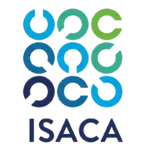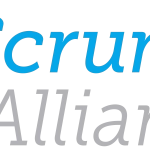Project Management in Operations Research an Overview
In the moment’s fast-paced business terrain, associations face a multitude of challenges when it comes to managing systems. From tight budgets and deadlines to complex workflows and stakeholder prospects, design operation has come a critical function across all diligence. One area where design operation plays a significant part is operations exploration. In this blog post, we’ll explore what design operation in operations exploration entails, why it’s important, the benefits it offers, and the crucial factors involved.
What’s Project Management in Operations Research?
Design operation in operations exploration involves planning, executing, and controlling systems related to optimizing business processes using fine models, statistical analysis, and other quantitative styles. The thing is to improve decision-making, reduce costs, increase effectiveness, and enhance overall performance. Operations exploration encompasses a wide range of operations, including force chain operation, logistics, manufacturing, healthcare, finance, and more.
clslearn offers you the best courses in the course of business management
Why is Operations Research Important?

Operations exploration is essential because it enables associations to make informed opinions based on data-driven insights. By applying fine models and quantitative styles, operations exploration helps identify openings for enhancement, minimize risks, and optimize coffers. It also allows businesses to dissect complex systems and processes, identify backups, and find ways to streamline workflows. Eventually, operations exploration helps associations achieve their pretensions more efficiently and effectively.
Benefits of Operations Research in Project Management
There are several benefits of incorporating operations exploration into design operations. First and foremost, it helps associations make better opinions by furnishing a more accurate representation of the situation. This allows brigades to identify critical factors and prioritize conduct, performing in more effective resource allocation. also, operations exploration helps brigades anticipate implicit risks and identify openings for enhancement, leading to a further streamlined and effective design operation process. Eventually, operations exploration enables associations to achieve better outcomes by optimizing coffers, reducing costs, and perfecting performance.
What are the factors of Operations Research?
Design operation in operations exploration involves several crucial factors. These include:
- Problem Formulation: This involves defining the problem and relating the objects and constraints.
- Model Development: This involves developing fine models and algorithms to break the problem.
- Data Collection and Analysis: This involves gathering and analyzing data to inform the model and validate its results.
- Result perpetration: This involves enforcing the result and covering its performance.
- Evaluation and Optimization: This involves assessing the result and relating areas for enhancement to optimize performance.
Examples of how operations exploration has been applied in design operations?

Some examples of how operations exploration has been applied in design operation
Resource Allocation Operations: exploration ways can be used to optimize resource allocation in design operations. For illustration, direct programming models can be used to allocate coffers similar to labor, accouterments, and outfit to minimize costs while meeting design conditions.
Scheduling Operations: exploration can be used to optimize design schedules and minimize design duration. For illustration, critical path analysis and network analysis ways can be used to identify the critical path and conditioning that have the most impact on design duration.
Risk Management Operations: exploration can be used to identify and manage design risks. For illustration, decision tree analysis and Monte Carlo simulation ways can be used to quantify the probability and impact of design risks and identify applicable threat mitigation strategies.
Quality Control Operations: exploration can be used to optimize quality control processes in design operations. For illustration, statistical process control ways can be used to identify and control sources of variation in design processes and outcomes.
Supply Chain Management Operations: exploration can be used to optimize force chain operation processes in design operations. For illustration, force control models can be used to optimize force situations and minimize costs while ensuring that accouterments and inventories are available when demanded.
These are just many examples of how operations exploration ways can be applied in design operations. By using these ways, design directors can make better opinions, optimize coffers, and improve design outcomes.
How does decision tree analysis work in design threat operation?
Decision tree analysis is a fashion used in design threat operations to help design directors make opinions under query. It involves constructing a decision tree that represents the possible outcomes of different opinions and their associated chances. The decision tree allows design directors to estimate the risks and prices of different options and make an informed decision based on the expected value of each option.
Overview of how decision tree analysis works in design threat operation
Identify the Decision: The first step in decision tree analysis is to identify the decision that needs to be made. This could be a decision related to design compass, schedule, budget, or other factors.
Identify the Possible Outcomes: The coming step is to identify the possible outcomes of the decision. This could include stylish-case, worst-case, and most likely scripts.
Assign Chances: Once the possible outcomes are linked, the coming step is to assign chances to each outcome based on available data and expert opinion.
Construct the Decision Tree: The decision tree is also constructed by representing the decision and the possible outcomes as nodes, and the chances as branches. The tree is generally organized in a hierarchical structure, with the decision at the top and the possible outcomes raying out from it.
Estimate the Expected Values: Once the decision tree is constructed, the expected value of each decision can be calculated by multiplying the probability of each outcome by its associated value. The expected value represents the average outcome if the decision is made multiple times.
Make the Decision Eventually, design directors can use the expected values to make an informed decision based on the risks and prices of each option.
By using decision tree analysis in design threat operation, design directors can identify and estimate the risks and misgivings associated with different opinions, and make informed opinions based on the expected value of each option. This can help minimize design risks, optimize coffers, and improve design outcomes.
How do design directors determine the values associated with each possible outcome?

Determining the values associated with each possible outcome is an essential step in decision tree analysis. The values represent the benefits or costs associated with each outcome, and they’re used to calculate the expected value of each decision. Then are some common styles that project directors use to determine the values of each possible outcome
- Expert Opinion: In some cases, design directors may calculate expert opinion to estimate the value of each possible outcome. Experts can give insights based on their experience and knowledge of the assiduity, which can be used to estimate the implicit benefits or costs associated with each outcome.
- Historical Data: Project directors can also use literal data to estimate the values of each possible outcome. This involves analyzing one system or analogous systems to identify the benefits or costs associated with each outcome.
- Market Research: If the design involves launching a new product or service, design directors can conduct request exploration to estimate the implicit profit or gains associated with each outcome.
- Cost-Benefit Analysis: Design directors can also use cost-benefit analysis to estimate the values of each possible outcome. This involves comparing the costs and benefits of each outcome and assigning a financial value to each.
- Sensitivity Analysis: Eventually, design directors can use insights analysis to estimate the values of each possible outcome. This involves analysing how changes in crucial variables, similar to design compass or budget, will impact the values of each outcome.
By using these styles or a combination of them, design directors can estimate the values associated with each possible outcome in decision tree analysis. The values can also be used to calculate the expected value of each decision and make an informed decision based on the risks and prices of each option.
design operation in operations exploration is a critical function that helps associations achieve their pretensions more efficiently and effectively. By incorporating fine models, statistical analysis, and other quantitative styles, operations exploration provides data-driven insights that enable better decision-making, threat operation, and resource optimization. Whether it’s in force chain operation, logistics, healthcare, finance, or any other field, operations exploration can help associations streamline workflows, reduce costs, and improve performance.
























